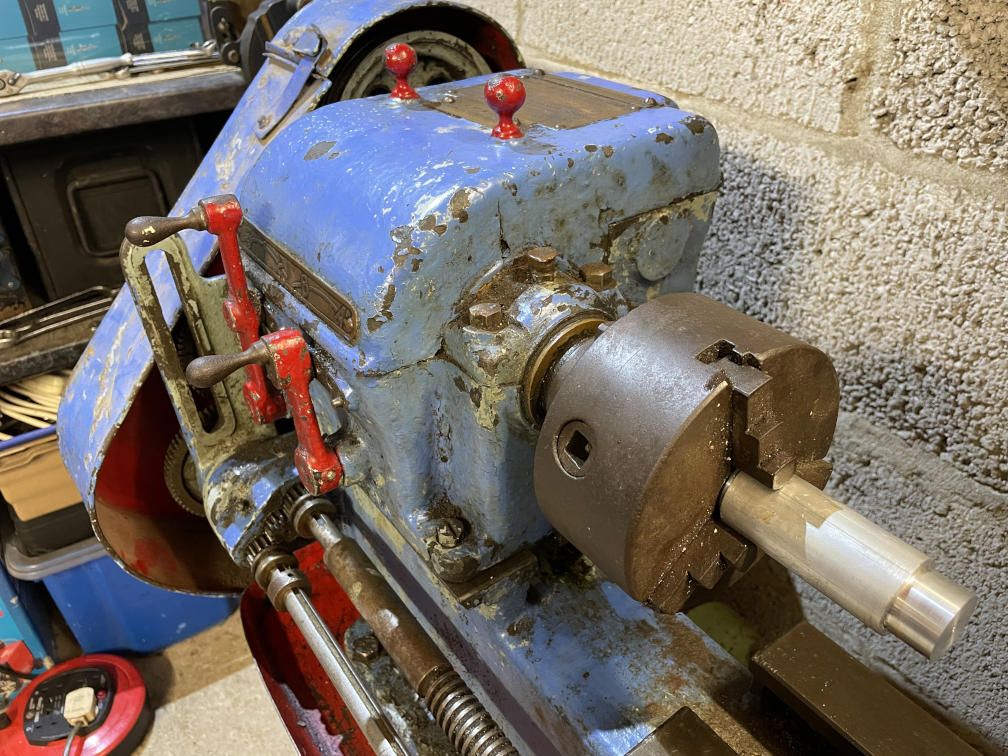Posted by Peter Williamson 2 on 10/11/2021 16:42:31:
… new lathe owner… took a punt on a old Denham Junior Mk1 … somewhat rough but seems to work so … Basically just go through it, clean and repair anything that needs it and give it a coat of paint.
… also looking for any documentation: …
Smart to gather info before acting! If not done already see lathes.co.uk's description, who say 'literature available'.
My advice is not to jump in at the deep end by dismantling. Not even if you're a experienced mechanic certain you know what you're doing! Instead put the lathe carefully through it's paces, familiarising yourself with the controls and finding out how the machine cuts metal.
Older machines are likely to be worn, with incidental damage, and missing accessories. We've no idea what it's been doing in the last 73 years, thrashed or cosseted!
I think the hobby lacks an in-depth guide to evaluating old machines, but this is how I'd approach it:
- Remove superficial muck and re-oil. Note obvious wear
- Confirm electrical safely. Wiring in good nick: rubber perishes, vibration breaks insulation at holes etc. Switches work correctly. Metalwork all earthed, no tingles. Old tools rarely meet modern safety standards so maybe fit a combined No Volt Release/Emergency Stop
- Turn by hand to make sure nothing's jambed and controls work. Check what change gears are fitted
- Confirm motor runs, no magic smoke or overheating
- Let it run off load for 30 mins, feeling the bearing areas for untoward heating. Warmish is OK
- Buy a Free Cutting metal such as EN1A-Pb for testing. Avoid scrap because it can mislead by cutting badly
- Get a sharp HSS tool to test with. Old machines often come with odd HSS tools, all blunt.
- Run through a series of cuts noting trouble. Start by moving the cutter with the compound slide and saddle manually, then try the auto functions. Move from slow light cuts showing the lathe moves appropriately to deep fast ones proving it's OK under load. Test all the gearbox speed settings, reverse and back-gear etc. Check half-nut engages the lead-screw along it's full length and in the high wear area near the chuck. Move from plain turning up to facing, threading and drilling from the tailstock. Parting off is a tough test. Finally, DTI check alignment by cutting a test bar
Hard for beginners to tell the difference between problems caused by:
- doing it wrong: RPM, Feed-Rate, Depth of Cut, cutter shape & setting, overhangs, iffy work-holding, maladjustments, bad technique etc.
- difficult materials that challenge a pro machinist with a lathe in GWO
- machine faults: slipping belts/clutch, worn bearings, hollowed slides, worn leadscrews/half-nut, cracked body, duff repairs, bell-mouthed chuck, bust shear-pins, stripped gears, rust etc.
- Maladjustments. Gibs, twisted bed (see Rollies Dad if the lathe cuts tapers), blunt tools, loose tool-post or saddle
- Don''t trust previous owners! Gibs fitted upside down with their screws not in the dimples, oil-ways blocked by grease, misfit parts from other kit, missing nuts, bolts, washers, grommets, cable clamps and sub-assemblies, dodgy electrics, paint & putty, stupid mods, belts wrong size, profile and overtight, misaligned motor/pulleys, and bodge repairs. Every time a tool is moved, there's a chance it's dropped causing bent shafts and controls etc. Maybe spindle bent by lifting with a rope around the chuck.
So I advise running the machine before anything intrusive. Save deep cleaning and major dismantling for later.
Nothing highlights faults like cutting metal because it stresses the whole machine emitting showers of audible and visual clues if anything is wrong. Inexperienced owners who start by stripping down and reassembling can cause more problems than they fix. Extra hard to diagnose mixes of predictable problems due to wear and weirdness caused by new mistakes.
The external appearance of machine tools isn't a good guide to condition. Paint and polish make wrecks look good, whereas a scruffy old lathe might be fine mechanically, ready to go after a few checks.
Step 1, I suggest, is to start by finding out what needs work by testing by doing. Take notes, don't jump to conclusions, ideally not fixing anything yet unless it's straightforwardly obvious. Don't take a working gearbox apart until certain the problem isn't an easily replaced shear pin. Collect evidence and think before acting. Not rocket science but lathers have subtleties. Easier to diagnose and fix lathes after a bit of experience.
If faults are detected, ask the forum. Many are easily fixed and others don't matter because the operator can compensate for them. Most worrying are the issues likely to be more time, trouble & money than the owner cares to take on: regrinds, costly bearings, and impossible to find essential spare parts. A large number of small faults might add up to more trouble than the machine is worth.
Special case: many people enjoy restoring old machines as a hobby. For them, lots of difficult faults are just more fun! But not if you want to get on with making things.
Amazing though how much good work is done on wonky lathes by skilled operators, so don't rush to reject it either.
Dave
Lee Crompton.






 . HHS would be nice but I don't have the skills yet to make them (or even a suitable grinder).
. HHS would be nice but I don't have the skills yet to make them (or even a suitable grinder).





